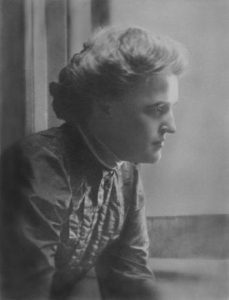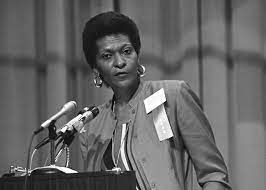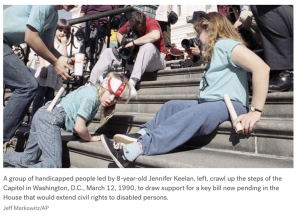People with disabilities have always been in existence but were not always acknowledged, treated fairly, or given the right to go to school. Shockingly, people with disabilities were often shunned, locked away in institutions, sterilized, even abandoned, or killed. These actions came from fear of various exhibited behaviors, misconceived notions of genetics, misinformation, and ignorance. The discussion of the history of special education includes terms that were once commonplace but are now not used or acceptable to use. These terms are included for historical purposes and are not intended to harm or encourage their use. The module will examine the historical changes for people with disabilities to learn from the past and project continued positive change for the future.
Beginnings: 1800-1900ish
To start our look back at people with disabilities, we begin with the well-known story of French Physician, Dr. John Marc Gaspard Itard. In 1800, Dr. Itard was appointed Chief Physician at the Institute for Deaf-Mutes in Paris. While there, he began working with a feral child named Victor. Victor had been found wandering in the wilds of France. He was estimated to be 12 years old, and speculation was Victor had spent most of those years alone. Victor had no communication or social skills. Dr. Itard believed Victor was capable of learning, so he worked extensively with him for several years, after which time Victor had learned very few words. Victor’s difficulty acquiring language caused Dr. Itard to highlight the essential importance of language attainment during a child’s earliest years of life. Goals set by Dr. Itard’s for educating Victor are now considered the first Individual Education Plan (IEP). Although Victor did not make the progress Dr. Itard had hoped for, he did prove that people with mental disabilities could learn. Dr. Itard’s historical work with Victor has given him the title of father of special education (Chalat, 1982).
The early 19th century saw people who were poor, including people with disabilities, often put into poorhouses. These were publicly funded housing units, or institutions, that allowed for the separation of outcasts from the rest of society. The 1910 census found ‘more than 110,000 (children) were living in asylums across the country. They were labeled ‘dependent, neglected, and/or delinquent’” (Katz, 1996).
The climate of the times still saw people with disabilities as having a defect and being ‘less than’ others. Labeling came to the forefront when Jean-Etienne Dominique Esquirol , a French psychiatrist, divided people with disabilities into two categories; “imbeciles” or “idiots.” Imbeciles were described as having intellect and being affective, but less than normal and they can only be educated to a certain extent. The term “idiot” referred to people with little or no intellect, no understanding, no thinking, and no desire to learn or know. However, by the mid 19th century, the understanding of people with disabilities began to change (The Minnesota Governor’s Council on Developmental Disabilities, 2022).
Dorothea Dix, a social reformer, was one of the people causing this change as she advocated for people with disabilities. She spent years visiting poorhouses and institutions, appalled by their living conditions, she went on to address congress. However, at that time, 1848, women could not address Congress, so she gave her speech to Samuel Gridley-Howe, an American physician and advocate for the education of the blind, to present on her behalf. Dix’s speech was positively received. A change in the education of people with disabilities would soon begin. Dr. Howe founded a school, The Massachusetts School for Idiotic and Feeble-Minded Youth. He, along with Edouard Sequin, a French physician and educationist, believed in the importance of family and community in the education of people with disabilities. They advocated for the preparation of people with disabilities to live in society instead of a lifetime locked away in institutions (The Minnesota Governor’s Council on Developmental Disabilities, 2022). Read a letter to Dr. Samuel Gridley Howe from an anonymous community member on behalf of a potential patient
The late 1800’s saw numerous schools created to support the education of people with disabilities. These training schools were based on Sequin’s teaching methods and were focused on educational outcomes. The training schools were founded on the belief that through education, compassion, and the teaching of social skills, the instructors could “make the deviant undeviant.” To help people with disabilities live within society. The schools were a success. However, this positive change soon took a turn for the worse. Then, the Civil War caused economic despair. People with disabilities who graduated from the training schools struggled to find employment in their communities, thus ending up in poorhouses or jails (The Minnesota Governor’s Council on Developmental Disabilities, 2022). Enrollment in the training schools continued to increase and more schools were opened. However, the school’s commitment to training and transitioning to society was no longer the focus. The increase in the number of students and the reduction of educational commitment changed the training schools to asylums. People were no longer students; they were residents who received custodial care in an institution that separated them from society.
 Reflect
Reflect
Check yourself for possible bias:
- What do you think of first when you hear “people with disabilities”?
- What do you see in your minds’ eye?
- Where do you think these ideas came from?
- Do you think your first thoughts can change? How? Why?
Research studies during the Reconstruction era began to associate disabilities with crime and poverty (Kode, 2017). American Scientist, Henry Herbert Goddard, was one of three educational reformers that brought the idea of eugenics to the forefront of culture and education. Eugenics is a science that seeks to manipulate human genetics to produce desirable characteristics in the general population. Goddard perpetuated the impression of intellectual and cognitive disabilities being inheritable. Goddard influenced people at the time to believe if people with disabilities reproduced, disease, crime, and evil would spread (Kode, 2017). Goddard’s book, The Kallikak Family, was used as proof that feeble-mindedness was an inherited trait. The Kallikak family line was traced back to a man named Martin Kallikak. Martin had fathered a child with a feeble-minded tavern worker but went on to marry a different woman who then fathered his children. Goddard claimed the marriage produced a good line of Kallikak’s. Goddard claimed the good line produced no feeble-minded children, but the other family line produced a considerable number. His book was also criticized for photos of the family to reinforce his idea of feeble-mindedness. He went on to report the high number of feeble-minded individuals in hospitals and detention homes, thus proving his point that heredity of feeble-mindedness was imminent. Goddard’s recommendations included segregation in asylums and forced sterilization. Goddard translated the Biney intelligence test and brought it to America. Goddard used the testing to not only label children as feeble-minded, but to reduce their potential as they were deemed to lack the ability to learn. In 1911, The Research Committee of the Eugenics Section of the American Breeder’s Association recommended not only lifelong segregation of people with disabilities, but also sterilization so they could not reproduce. Within 50 years of the recommendation, almost 50,000 people were sterilized (Kode, 2017).
Examples of the horrors of the Eugenics movement are vast. One such example is a film called The Black Stork (1917). The film was based on a true story of a doctor convincing the parents of a newborn with syphilis to allow the baby to die to spare society one more outcast. The undesirable traits defined by the eugenics movement were concentrated in poor, uneducated, and minority populations. By 1931, 30 states of the United States had enacted sterilization laws. California’s sterilization law was so prosperous that the Nazi’s of Germany turned to California for advice. Hitler was noted to state that he was following the laws of America that prevented reproduction of the unfit (Black, 2003). The eugenics movement was discredited after the horrors of Nazi German during WWII.
The continued expansion of public institutions housing people with disabilities rose from 10 institutions in 1900 to 80 in 1923, thus perpetuating segregation of people with disabilities from the public (The Minnesota Governor’s Council on Developmental Disabilities, 2022). An example of one such institution is Fairview Training Center in Oregon which operated from 1908-2000. It was one of the largest institutions in the United States. One former resident, Terry Schwartz, lived at Fairview from two to 30. He stated “I had no feelings; we did not know what was right and what was wrong. We were under control of ‘them,’ they did all the thinking for us, they did all the talking for us, they tell us what to do, constant, 100%”.
Around the same time as institutionalization of people with disabilities, there was an influx of immigrants to the United States. These immigrants were fleeing poor living conditions in their home countries but ended up living in similar conditions in New York City. In the meantime, Alfred Binet, a psychologist, was asked to help determine which people were feeble-minded. As a result, he developed an intelligence test. The test results categorized people as having a disability based on their IQ Testing and discrepancy from what was considered a normal IQ score. The test was used to segregate immigrants by categorizing them as feeble-minded and idiots (Cherry, 2022).
 Reflect
Reflect
Intelligent intelligence testing
- Do you think that the immigrants were feeble-minded and idiots?
- What else may have skewed their IQ test score?
- Is an IQ test a true test to use for qualifying for a disability? Why or why not?
Progressive Reform: 1900ish-1970

Farrell looked forward to a time “when every teacher will know what the ability of the child is, and the child’s burden as it is represented by the course of study he undertakes. That burden will be trimmed to his ability. It will not be the same burden for every child, but it will be a burden for every child commensurate with his ability to bear” (Farrell, 1925, p.17).
The International Council for the Education of Exceptional Children was formed by students from Farrell’s courses seeking a way to network and support each other. At the first meeting, August 10, 1922, Elizabeth Farrell was elected president (Kode, 2017). This organization is now called the Council for Exceptional Children. Farrell may have been disappointed in the slow progress toward her goal of full integration of students with disabilities learning alongside their typically developing peers. 100 years later, we have not yet universally achieved her goal.
The first special education class was created in 1896 in Rhode Island. As more students were entering public education, teachers were noticing an influx of students with learning disabilities. At this time in history, they were labeled feeble-minded or backward. Although compulsory education laws were in force by 1918 across the entire United States, children with disabilities were excluded from most public schools. The choice for families was to keep their children with disabilities at home or to institutionalize them (Pardini, 2017). Schools turned to the institutions to train teachers for working with students categorized as feeble-minded (The Minnesota Governor’s Council on Developmental Disabilities, 2022).
By 1933, Parent advocacy groups became active advocates of change to better educational opportunities for their children (Pardini, 2017). Scientists, such as Goddard, witnessed the changes education was making for people previously identified as feeble-minded. This notable change in the scientific community brought about change to the idea of segregation through institutionalization (The Minnesota Governor’s Council on Developmental Disabilities, 2022).
Another change in perspectives came about when injured service men and women returned from World War II. These service members pressured the government to provide them with rehabilitation programs and services. Currently, there were no laws requiring wheelchair or handicap access to buildings or walkways. People with disabilities could be refused service at many business places. The end of the war also saw an increase in children born with disabilities due to the baby boom and the polio epidemic.
 Reflect
Reflect
The end of World War II also saw the end of eugenics. What was the cause of the change?
The landmark Brown vs. Board of Education was a case sent to the Supreme Court in 1954. The two lawyers who brought the case forward were 1922 Harvard Law graduate Charles Houston and one of his students, Thurgood Marshall, who later became an Associate Justice of the Supreme Court. The case made segregation by race unequal and unconstitutional in schools. Race now was considered a binary system. People were counted as either black or white. Native Americans were labeled as black and continued a long-fought battle to be recognized separately (Feller, 2022). Regarding special education, conceptions of disability do not exist in the Native American culture. There is no language equivalent or translatable concept for the word disabled. The closes phrase means “simply different”. Native American beliefs of the connection between mind, body, and spirit do not create the binary idea of normal and abnormal as the Euro centric culture does. This nonbinary thought creates a culture that is disability inclusive (Leib-Neri, 2015). Access to public education is a right for all people. This landmark case set the stage for all people to be afforded that right. The disability community used this law to argue the same point for people with disabilities. Separate is NOT equal.
While Brown vs. Board of Education bill was going through the court process, parent advocacy groups continued to seek disability rights and formed the National Association of Retarded Citizens (NARC) in 1953. Parents were only given the choice of sending their children with disabilities to an institution. The founding parents of NARC wanted more for their children. They wanted them to have fulfilling lives as a member of society. NARC has gone through name changes with the progress made. Currently, they are known as the ARC. It is not an acronym, merely a name for a group that advocates for people with disabilities to lead full lives.
The 1960’s were a time in history abounding in social movements. At the forefront were equal treatment for all, breakdown of barriers to lives and jobs, and parents’ continual advocacy for their children to receive services needed. Protests, sit-ins, and marches were frequent. Samuel Kirk persuaded congress to begin providing financing to train teachers to be experts in helping children with special education needs.
A significant addition to special education began in 1968, led by Eunice Kennedy Shriver (Special Olympics, 2023). What began as a summer camp at Shriver’s home, grew into what is now the Special Olympics. Shriver saw the difference physical activity could make for children with disabilities, both for their physical and mental health. In the process of developing the Special Olympics, the Kennedy Foundation pushed for legislation developing several initiatives for people with disabilities.
 Deeper Dive
Deeper Dive
Rosemary Kennedy (d2005)

She was the third child and eldest daughter of Joseph and Rose Kennedy. A lobotomy performed on Rosemary in 1940 left her permanently disabled. She inspired her sister, Eunice Kennedy Shriver, to begin a summer day camp that grew into the Special Olympics, and inspired her brother, President John F. Kennedy, to initiate sweeping legislation designed to improve the quality of life for Americans with disabilities.
Change through the law: 1970-2020
We must remember that while this progress was happening, there were still people with disabilities being institutionalized. This investigative report reminds us of the living conditions.
The year 1972 saw an influx of new landmark legislation passed. Pennsylvania Association for Retarded Children (P.A.R.C.) v. State of Pennsylvania was once such lawsuit. Pennsylvania had a law that allowed schools to refuse services for children with intellectual disabilities. The lawsuit was brough forward and P.A.R.C. won. This was a major step toward Free Appropriate Public Education (FAPE). Mills v. Board of Education of the District of Columbia. Public Schools in the District of Columbia were allowed to refuse services and to expel students with learning disabilities at their discretion. A 1971 report to the Department of Health, Education, and Welfare indicated 12,340 children with disabilities were not going to be served in the 1971-72 school year. The lawsuit was brought forward on behalf of seven of those children (Justia, 2023). The results were a win for those seven children and other children in the district. The district was held accountable for providing public education to all students.
The Rehabilitation Act of 1973, Public Law 93-112, was the first act to look at the civil rights of people with disabilities. The purpose was to prevent discrimination in public settings, including jobs, transportation, and education. The definition of protection applies to programs that receive federal funding, not the buildings where the programs are held. The overriding statement is “No one shall be excluded from participation, denied benefits, or subject to discrimination.” Section 504 of the act ensures Free Appropriate Public Education and equal opportunities for children with disabilities. Interestingly, President Nixon originally vetoed the bill, but sit-ins and pressure from activists persuaded Congress to override the veto.
Parents and advocates, fueled by the new law, continued to pursue equal rights for children with disabilities. The Education for All Handicapped Children Act (EAHCA) of 1975 gave every child the right to an education and included the parents’ right to be involved in their children’s education. This important act was later named IDEA-Individuals with Disabilities Education Act. This action is when the Independent Education Programs (IEP) began. Parents’ continual participation in the education of children with disabilities brought additional changes.

In an impoverished neighborhood of Chicago, Illinois, Marva Collins began the Westside Preparatory School in 1975. The school was located on the second floor of her home. The first students included her own children as well as neighborhood children, some with learning disabilities. By the end of the first year, all of the students scored five grades higher than their grade level on standardized tests. Marva Collins became known as a teacher of the unteachable. President Ronald Reagan offered her the post of secretary of education, which she turned down to continue developing her Westside Preparatory School (Biondi, 2019).
In 1979, a child with disabilities, presented by his guardian sued the superintendent of schools in the state of California. This landmark case brought change to how a child is placed in classrooms for “educable mentally retarded” children. Larry P vs. Riles, argued the sole use of IQ testing. The lawsuit contends IQ testing is biased and black children are disproportionally placed in classes for special education. At the time of the lawsuit, black children represented ten percent of the student population in California but embody 25% of the population of children in “educable mentally retarded” classrooms. The lawsuit found the state of California in violation of Title VI of the Civil Rights Act of 1964, the Rehabilitation Act of 1973, and the Education for All Handicapped Children Act of 1975. The results of this lawsuit are used today. IQ tests cannot be the only diagnostic tool for placement in special education classrooms.
 Reflect
Reflect
Check yourself for bias:
- At what other time in the history of special education did we have the discussion on IQ testing?
- Why do you think the Larry P v. Riles lawsuit occurred even though the topic was discussed prior?
The 1960’s and 70’s brought challenges people with disabilities have to the forefront. Although major steps forward occurred, there was still work to be done. The year 1982 saw a lawsuit from the family of a girl who was deaf/hard of hearing. The child was placed in a general education classroom for kindergarten and observed to assess her needs. The school decided an FM transmitter would assist her in hearing the teacher. The child’s parents, who were also deaf, asked for a sign language interpreter to also be in the classroom. After an initial trial period with the sign language interpreter, the school administration decided that it was not a benefit to the child and stopped the services. This lawsuit, to provide the sign language interpreter, clarified the definition of Free Appropriate Public Education (FAPE). The court ruled in favor of the child and her family. Although the child was performing better than some of her peers, she was not achieving her full potential as she would have without her handicap. The child’s case also clarified the definition for providing related services to students.
Another interesting case in special education history is Honig v. Doe, 448 (1988). This case sets the precedent for the “stay-put” rule. Two students named in the lawsuit are diagnosed as emotionally disturbed. The students were suspended indefinitely for violent and disruptive conduct related to their disability. This rule states that a special education student cannot be excluded from the classroom for behaviors that stem from their disability during a review of the incident.
The case of a severely disabled child being denied an education came to court in New Hampshire in 1988. The school district argued that Timothy W. needed medical care, not an education in the school system. They argued Timothy’s severe disability would prevent him from the benefit of a public education. A district court judge agreed with the school district and denied schooling for Timothy W. However, the U.S. Court of Appeals reversed that decision, referring to the Education for All Handicapped Children Act of 1975 (EAHCA). The judge reaffirmed all children have the right to public education, without exception. Congress recognized the needs of severely handicapped children and rather than exclude them from public education, they gave them priority in the EAHCA.
In contrast to Timothy W., a 1989 lawsuit on behalf of Danny R.R. argued for him to be placed in a general education classroom with his non-disabled peers. Danny’s Downs Syndrome was such that even with modifications and accommodations Danny could not progress with his kindergarten peers. Also, the required attention Danny needed took away educational time from his peers. The court upheld the school district’s decision to place Danny in a full-time special education classroom and would participate in lunch and recess with his non-disabled peers. EAHCA requires schools to provide a continuum of services appropriate for each individual child. In Danny’s case, that is a special education classroom.
 Reflect
Reflect
Check yourself for bias:
- The laws provide public education to all handicapped children. How will you include a child with severe disabilities in your classroom?
- Upon reflection of the previous court cases, do you agree or disagree with the outcome? Why or why not?
The climate of special education in public schools continued to change as court cases persisted. In 1990, the EAHCA amendments became law. This change brought about a revision in name from the Education of All Handicapped Children Act to the Individuals with Disabilities Education Act (IDEA). At this time, transition services and assistive technology were added to the definition of special education services and are now required to be included in students IEPs. Rehabilitation counseling and social work services were added as related services under law. Services and rights under IDEA were extended to comprehensively include children with autism and traumatic brain injury. These positive changes made yet another advancement in the treatment of people with disabilities.
“Let the shameful walls of exclusion (finally) come tumbling down” – President George Bush 1990
Although IDEA offered more improvements in the rights of people with disabilities, it did not address all their needs. The Americans with Disabilities Act (ADA) picked up where IDEA left off. In 1990, a group of disability rights activists went to the United States Capitol building in Washington, D.C. Their goal was to achieve rights for disabled Americans. The activists got out of their wheelchairs and crawled up the 78 stone steps of the capitol building, which was inaccessible to wheelchairs. It was referred to as the Capitol Crawl and was a significant event which spurred the passage of the Americans with Disabilities Act (ADA). The Capitol Crawl showed the willingness of people with disabilities to unite for a common cause.
ADA built on the thought in the Rehabilitation Act of 1973, which prohibits discrimination based on disability in any program or activity that is federally funded. ADA went a step further guaranteeing equal opportunity for individuals with disabilities in employment, access to public spaces and transportation, state and local government services, and telecommunications. This is the most significant Federal law ensuring equal civil rights to people with disabilities. The ADA went beyond requiring businesses to stop discriminatory practices. It required businesses and governments to proactively offer equal opportunities to people with disabilities (National Council on Disability, 2004). Most of the provisions of the ADA were in place but were now required of the private sector as well as government.
The continued refinement of what constitutes appropriate placement of students with disabilities came with the Sacramento City School District v. Rachel H court case (1994). Rachel was a young child with an intellectual disability. When Rachel was going to start kindergarten, her parents requested the school district place her in a general education classroom. The district only offered placement in a special education classroom for Rachel. Her parents file for due process under the IDEA. Under due process, every person has the right to his or her day in court. “Due process” in special education means the right and procedures that apply to deciding disagreements between parents and districts. The hearing officer agreed with the parents and ruled in their favor. The district appealed the judgment. The appellate judge identified four factors to consider when deciding proper placement for a child with disabilities. The four criteria are:
- The educational benefits available in the regular classroom
- The non-academic benefits of interaction between a student with disabilities and those without disabilities
- The impact of the student with disabilities on the teacher and other children in the regular classroom
- The cost of supplementary aids and services required for mainstreaming the student. (Disability Rights Education & Defense Fund, 2023)
President George W. Bush signed the No Child Left Behind (NCLB) Law of 2002, was an update to the Elementary and Secondary Education Act. The goal was to reform schools and establish a new path to results. NCLB held four key principles: Every child can learn, we expect every child to learn, and we must hold ourselves accountable for every child’s education. Funding for schools was attached to students’ standardized test scores. The pillars of NCLB consisted of: Stronger accountability for results, more freedom for states and communities, proven education methods, and more choices for parents. NCLB was the guiding law for k-12 general education from 2002-2015. Accountability for test scores was the focus, however, the law was controversial as it penalizes schools that could not meet the target goals. Additional issues of equity included the challenges for urban schools. Issues of academic, professional, financial, and instructional disparities urban schools historically encounter. Insufficient funding to urban and rural schools left minorities and families with low socio-economic status with negative effects of NCLB (Fusarelli, 2004). Teachers modified their teaching to teach to the test, leaving out cultural components and other learning opportunities to instead meet prescribed test scores. Opponents to NCLB stressed teacher creativity and student learning were muffled. Standardized testing and students in special education goes against the idea of special education. Individualized instruction does not coincide with one-size-fits-all testing. NCLB tests were considered ‘too densely written, too long in duration, and too difficult in terms of readability’ and required a level of understanding that required indiscriminate administration, even with accommodations such as extra time and extra breaks’ (Meek, 2006). NCLB did not improve scores or narrow achievement gaps.
President Barrack Obama replaced NCLB with the Every Student Succeeds Act (ESSA) in 2015. Differences between the NCLB and ESSA include allowing states to set their own testing scores. Schools are measured by more than just testing scores of their students. States are required to use; reading and math test scores, English-language proficiency test scores, high school graduation rates, and a state-chosen academic measure for elementary and middle schools. The schools are also measured on school quality through factors such as kindergarten readiness, access to and completion of advanced coursework, college readiness, school climate and safety, and chronic absenteeism. States are required to assess more weight to the academic factors of the law. Instead of penalizing schools for low test scores, struggling schools will receive more funding and develop an improvement plan.
 Deeper Dive
Deeper Dive
For a deeper dive into the differences between NCLB and ESSA, explore these resources:
IDEA is the regulating document for special education. The first passage was in 1990, due to changes in the Education for All Handicapped Children Act. The document is a living document and is continually reviewed and amended. In 2004, IDEA was reauthorized and aligned to the NCLB Act. The new iteration is titled the Individuals with Disabilities Education Improvement Act (IDEiA). Highlights include early intervention services, greater accountability and improved educational outcomes. And raised standards for instructors who teach special education classes. Additional regulations continued in 2006, 2008, 2010, and continues currently.
Free Appropriate Public Education (FAPE) is a right for all students to have an education. A landmark case describes what constitutes FAPE. Endrew F. vs Douglas Count School District RE-1 (2017) is a case regarding Endrew F, a student with autism, who was receiving his education with the assistance of an Individual Education Plan (IEP). Endrew’s parents questioned the school district when Endrew was in fourth grade as they believed his academic and functional progress has stagnated. Endrew’s fifth grade IEP was like his previous years, so his parents pulled him from the public school and placed him in a private school. The home district presented a revised IEP, which the parents rejected as inadequate. They then wanted reimbursement for Endrew’s private school tuition by filing a complaint under IDEA. The court rejected the tuition request and supported the revised IEP. The Court of Appeals cited the Rowley court case stating the instructional services provided to children with disabilities must be drafted to confer “some educational benefit.”
More recently, the Coronavirus pandemic showed the shortage of licensed and skilled teachers. The pandemic interfered with federal law through the loss of services. View this family’s plight with two children diagnosed with autism during the pandemic.
Present day: Disability vs. Different Ability
Closing statement: We should not dilute or ignore the history of our treatment of people with disabilities. Equity means everyone deserves to be treated fairly and impartially. Fair is not equal; it is everyone receiving what they need. Let us not repeat history, but instead, learn from it.
References
Biondi, C. (2019). Marva Collins, Her Method, and Her “Philosophy for Living.” The Objective Standard, 14(1).
Black, Edwin. “The Horrifying American Roots of Nazi Eugenics.” History News Network. N.p., Sept. 2003.
Chalat, N. I. (1982). History of Medicine Jean Marc Gaspard Itard – 1774-1838. The Laryngoscope, 9(6). https://doi.org/10.1002/lary.1982.92.6.627
Cherry, K. (2022). Alfred Binet and the History of IQ Testing. Verywellmind. https://www.verywellmind.com/history-of-intelligence-testing-2795581
Disability Rights Education & Defense Fund (2023) Sacramento City Unified School District Board of Education v. Rachel H. https://dredf.org/1994/06/13/sacramento-city-unified-sch-dist-bd-of-educ-v-rachel-h/
Farrell, E. E. (1925). What New York City does for its problem children. Ungraded XI(5), 10-18.
Feller, Laura (2022). Being Indigenous in Jim Crow Virginia: Powhatan people and the color line. University of Oklahoma Press: Norman https://doi.org/10.38118/978080619607
Fusarelli, L. D. (2004). The Potential Impact of the No Child Left Behind Act on Equity and Diversity in American Education. Educational Policy, 18(1), 71–94. https://doi.org/10.1177/0895904803260025
Justia US Law (2023). Mills v. Board of Education of District of Columbia, 348 F. Supp 866 (D.D.C. 1972) https://law.justia.com/cases/federal/district-courts/FSupp/348/866/2010674/
Katz, M. (1996). In the shadow of the poorhouse: A social history of welfare in America. NY: Basic Books.
Kode, K. (2017). Elizabeth Farrell and the History of Special Education (2nd Ed.) Council of Exceptional Children.
Meek, C. (2006). From the inside out: A look at testing special education students. Phi Delta Kappan, 88(4), 293-297. https://doi.org/10.1177/003172170608800409.
The Minnesota Governor’s Council on Developmental Disabilities (2022). Parallels in Time: A history of developmental disabilities. https://mn.gov/mnddc/parallels/index.html
National Council on Disability (2004). Equality of Opportunity: The making of the Americans with Disabilities Act. https://ncd.gov/publications/1997/equality_of_Opportunity_The_Making_of_the_Americans_with_Disabilities_Act
Leib-Neri, M. (2015). Everything in nature goes in curves and circle: Native American concepts of disability. Health & Medicine in American History. Grinnell College. Retrieved from: https://lewiscar.sites.grinnell.edu/HistoryofMedicine/uncategorized/everything-in-nature-goes-in-curves-and-circles-native-american-concepts-of-disability/
The Arc (2021). Our History. https://thearc.org/about-us/history/
Pardini, P. (2017). The History of Special Education. Weebly. https://impactofspecialneeds.weebly.com/special-education-history.html
Special Olympics (2023). Out of the Shadows: Events leading to the founding of Special Olympics.
https://www.specialolympics.org/about/history/out-of-the-shadows-events-leading-to-the-founding-of-special-olympics?locale=en
means the right and procedures that apply to deciding disagreements between parents and districts



